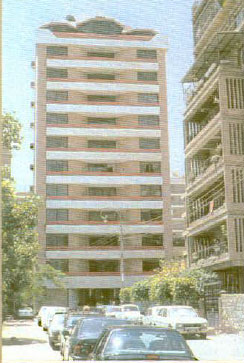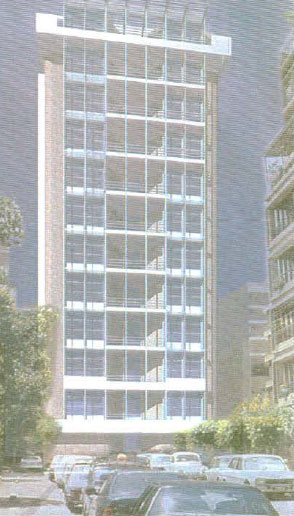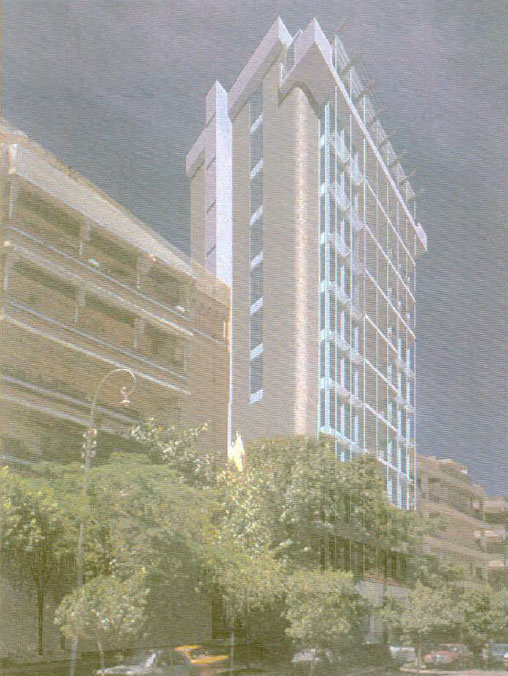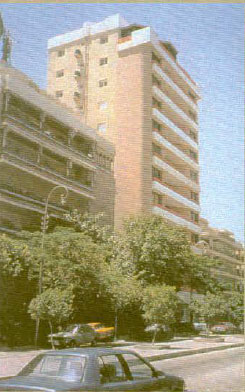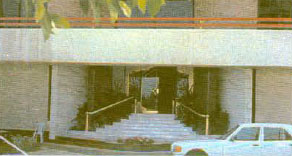

An Interview with Nezar AlSayyad of the Office of Xross-Xultural Architecture
Medina: Why do you call your firm XXA, and what does it stand for?
XXA: The office of Xross Xultural Architecture received its name because, as its main principal, I believe in a process of design-making based on understanding the centrality of culture in both, people's appreciation of architecture, and the impossibility we face as professionals as we attempt to represent it in our buildings. XXA is based on the idea that making architectural objects, and giving them an urban form can reflect both the totality of the places within which they are built, and the multiple readings and meanings that different observers may attach to them. The practice itself is technically twenty years old. I re-established it here in Berkeley, California in 1989, but most of my work is still in the Middle East. My primary collaborator is the Egyptian architectural engineer and planner; Tarek AbuZekry in Cairo. In Cairo I also collaborate with Misr Consultants, an architecture and construction-management practice, and with PACER, a firm with large-scale urban projects.
Medina: Is there a theme that ties your projects together?
XXA: I believe the practice of architecture is mainly based on good storytelling. I believe in three things: architecture as narrative, architectural projects as arguments, and buildings as propositions. Thus each building should possess elements of form and, accordingly, images that communicate something about the intentions of its maker. "Maker" here includes not just the architect, but the entire team that puts a project together. Beyond this, one of the main differences between architects like me who come from the academy and more market-oriented practitioners is that we have the obligation to explain why Vr'e do what we do, and how we do it. So, in a sense, process becomes as important as product. But since users of buildings cannot see process, we must leave clues. Here we go back to the issue of image.
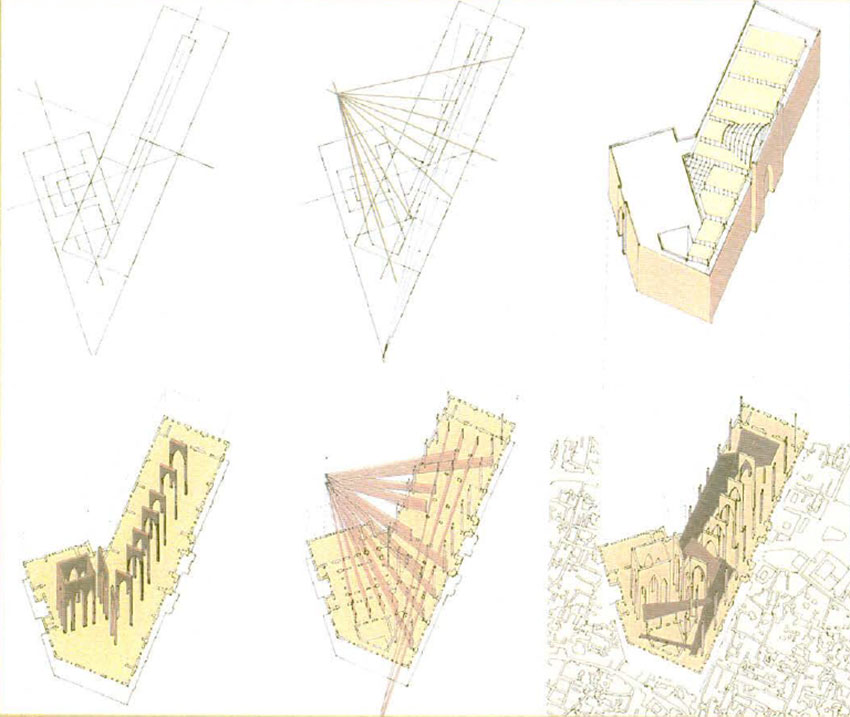
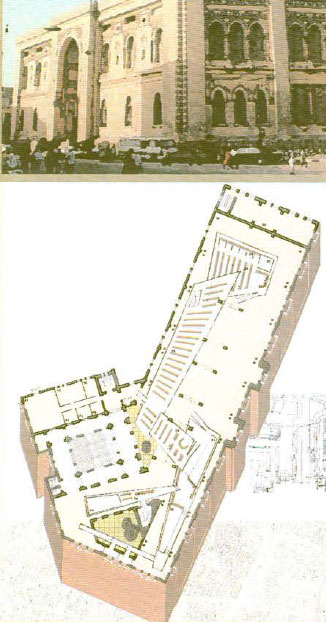 Medina: Your Dar al-Kuttub proposal was well publicized in Egypt, what happened to this award winning project?
Medina: Your Dar al-Kuttub proposal was well publicized in Egypt, what happened to this award winning project?
XXA: This was a competition in which I collaborated with Marl< Mack, a former colleague at the Universicy of California, Berkeley. Our joint entry was selected in this open international competition in 1994, and we Vr'ere invited to participate with four other finalists. In the second phase, Vr'e decided to submit two separate entries. I won second prize in this second phase in 1995. The structure involved, Dar AI-Kuttub, was designed in the nineteenth century as a library for old manuscripts in the neo-lslamic style by a European art:hitect. The building, which has been used as the Museum of Islamic Art, has acquired the image of an authentic historic structure within the Medieval cicy quarter.
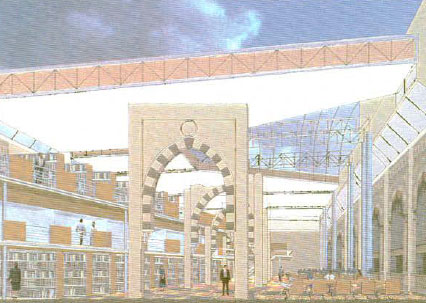
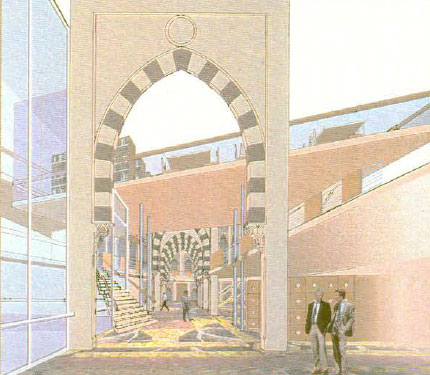 My entry envisioned that the second floor of the building would be redesigned to house the many hand calligraphed manuscripts and chronicles of medieval Cairo, while maintaining the Islamic Museum below. I imagined this realistic solution as a process of archaeological reconstruction. We had to keep the outside skin of the building and maintain its established image, but we were able to create a new geometry of intervention by removing the roof and keeping only the main arches on the second floor. Then, by inserting a new structure around and within the arches, we managed to rehabilitate the building to accommodate its new function. Archaeologically, our new structural grid was inspired by the siting and orientation of the building, and it takes into account the structure of both the medieval quarter which it borders and the modem city.
My entry envisioned that the second floor of the building would be redesigned to house the many hand calligraphed manuscripts and chronicles of medieval Cairo, while maintaining the Islamic Museum below. I imagined this realistic solution as a process of archaeological reconstruction. We had to keep the outside skin of the building and maintain its established image, but we were able to create a new geometry of intervention by removing the roof and keeping only the main arches on the second floor. Then, by inserting a new structure around and within the arches, we managed to rehabilitate the building to accommodate its new function. Archaeologically, our new structural grid was inspired by the siting and orientation of the building, and it takes into account the structure of both the medieval quarter which it borders and the modem city.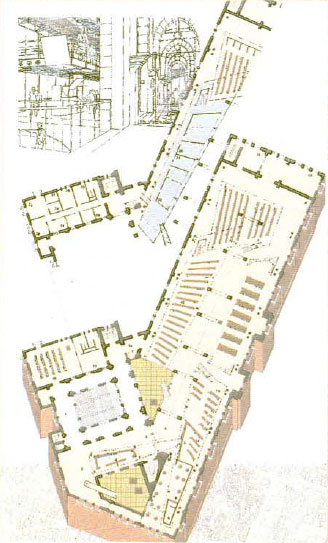 Unfortunately, the politics of this particular competition resulted in a change in the project scope, and it became instead a simple remodel of an existing structure, contrary to what was originally announced.
Unfortunately, the politics of this particular competition resulted in a change in the project scope, and it became instead a simple remodel of an existing structure, contrary to what was originally announced.
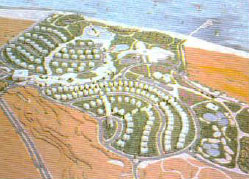
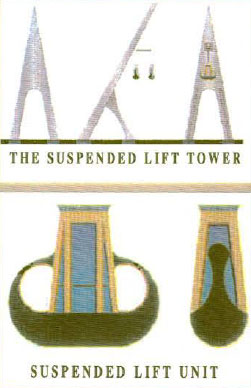 Medina: How was the concept of narrative ideas applied to the Four Sails Resort?
Medina: How was the concept of narrative ideas applied to the Four Sails Resort?
XXA: This project was inspired by one of the cities in ltalo Calvinos Invisible Oties. It is a city situated where a desert meets a sea. for the sea traveler. the city resembles a camel, and for the desert traveler it resembles a ship. The design of this project was envisioned with this narrative in mind and was informed by a statement describing the conditions of the site and our development scenario. The site is almost one kilometer long and drops about 70 meters. So we designed a cable lift that goes down from the highest slope on the main road to the lowest point on the beach. Since the logo of the development company that organized the competition was an ancient Egyptian papyrus boat, we brought the notion of sails into the design. As soon as you enter the site, you see the four elegant simple towers carrying the lift system descending down the hill. They resemble four sails of a boat The lift carriage itself resembles a papyrus boat.
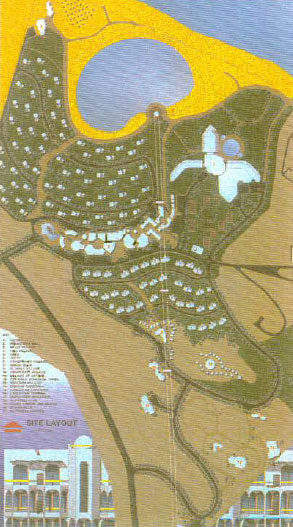
The program called for a hotel, about 140 units of housing, and a commercial area. We divided the housing into two parts which we called the valley village and the hill town. The design of the villas below is based on the notion of a boat which has come out of the sea and split the cube of the dwelling in two. The form of the boat then becomes a negative space that can serve as both a courtyard and an atrium. We achieved this effect using glass panels that either enclose a pool, or slide back to create a covered outdoor space open to the sea. For those with vernacular sensibilities, we also designed a traditional row house complex, which we called the hill town. Its design uses the domes common in Islamic architecture and the white-washed walls and simple forms of the Mediterranean tradition.
In our design we separated the commercial area from the hotel. The notion here was that the hotel would run a bus along the main Hurghada road to bring visitors from other hotels on the strip to the top lift station. Visitors could then ride the lift all the way down to the public beach, or they could stop at the commercial spine, which is connected to the hotel and contains several restaurants. So, in a sense, the project breaks from the notion of a gated hotel, which has become synonymous with Red Sea resorts. In designing it, my hope was that the overall form of the complex would reveal to its users the story embedded in its making. It is architecture as "story telling", if you will.
Medina: Was the design for the Hadaik Towers pursued using a similar approach?
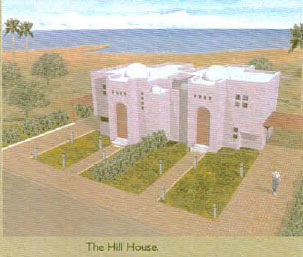 XXA: Ironically, this was a result of a competition that we lost but we got a commission for another apartment building from the client who liked our entry. This project involved high-end residential towers on two separate sites on Umam street in an area of Cairo called Hadaik. The developer had constructed one tower in the early nineties designed by my partner Tarek AbuZekry on a comer site where Umam street meets an important square. The program called for a design that would visually relate to this existing building allowing the developer to make its presence on the street recognizable. The tower on the small site of about 20 by 24 meters was promising because of its location. Facing a perpendicular street, the code allowed us to build up to ten stories instead of the usual fiVe. Each floor serves as a single apartment in a "vertical villa" format. Since we had to depend on the street facade for views, we planned the units with the major spaces overlooking it. Only the bedrooms are placed in the back, facing the setbacks. We also designed a thin steel mesh to cover the windows. We hoped this way to capture, in a modem manner, the qualides of the traditional mashrabiya. Of course, you can never get a building built exactly the way you design it, and this screen was eliminated by the client during construction for cost reasons. But for Egypt this is very good execution. One of the big issues in a project like this is being able to control basic elements such as where the air-conditioning units fit. We detailed the structure to ensure that these individual units all be placed on one side where they would be less visible. We picked up the color and sense of rounded comers from the existing tower. So, while all the comers may be right or acute angles, we slightly rounded them. To accentuate this detail, we used a single red colored metal-pipe handrail for the large balconies placed facing the street at the heart of each unit. Balconies, called terraces, have always been important in Egypt They are places where guests are entertained, and where the residents may sleep during the hot summer months. They also serve much the same role as an American front porch, giving residents access to what is going on in the street.
XXA: Ironically, this was a result of a competition that we lost but we got a commission for another apartment building from the client who liked our entry. This project involved high-end residential towers on two separate sites on Umam street in an area of Cairo called Hadaik. The developer had constructed one tower in the early nineties designed by my partner Tarek AbuZekry on a comer site where Umam street meets an important square. The program called for a design that would visually relate to this existing building allowing the developer to make its presence on the street recognizable. The tower on the small site of about 20 by 24 meters was promising because of its location. Facing a perpendicular street, the code allowed us to build up to ten stories instead of the usual fiVe. Each floor serves as a single apartment in a "vertical villa" format. Since we had to depend on the street facade for views, we planned the units with the major spaces overlooking it. Only the bedrooms are placed in the back, facing the setbacks. We also designed a thin steel mesh to cover the windows. We hoped this way to capture, in a modem manner, the qualides of the traditional mashrabiya. Of course, you can never get a building built exactly the way you design it, and this screen was eliminated by the client during construction for cost reasons. But for Egypt this is very good execution. One of the big issues in a project like this is being able to control basic elements such as where the air-conditioning units fit. We detailed the structure to ensure that these individual units all be placed on one side where they would be less visible. We picked up the color and sense of rounded comers from the existing tower. So, while all the comers may be right or acute angles, we slightly rounded them. To accentuate this detail, we used a single red colored metal-pipe handrail for the large balconies placed facing the street at the heart of each unit. Balconies, called terraces, have always been important in Egypt They are places where guests are entertained, and where the residents may sleep during the hot summer months. They also serve much the same role as an American front porch, giving residents access to what is going on in the street.

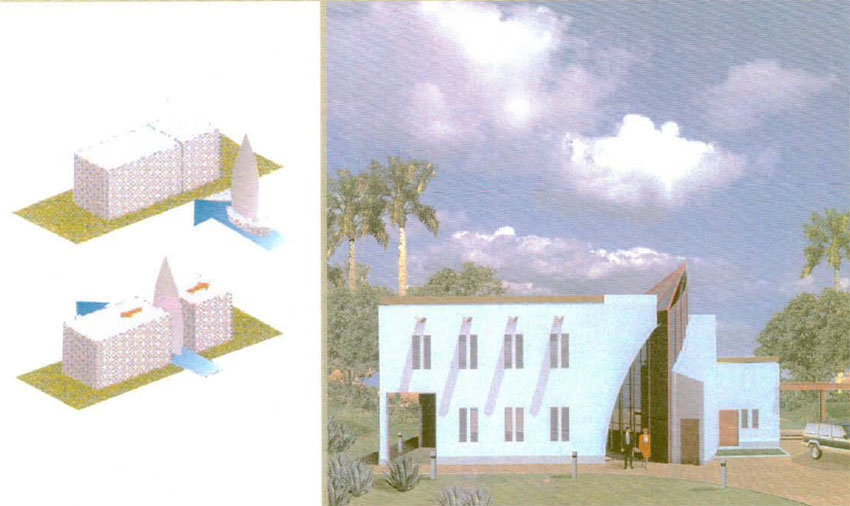 Our design for the second building. which was won by another firm. was to occupy a huge comer site close to the end of the street, about one mile from the first. The notion here was to use elements developed in the first two buildings to design a large complex. The code allows us to build a five-story block on the side street and a block of about six stories on a courtyard. The main block which faces the street was very massive, and our most difficult task here was to design a structure that breaks it up and give the impression it is more than one building.
Our design for the second building. which was won by another firm. was to occupy a huge comer site close to the end of the street, about one mile from the first. The notion here was to use elements developed in the first two buildings to design a large complex. The code allows us to build a five-story block on the side street and a block of about six stories on a courtyard. The main block which faces the street was very massive, and our most difficult task here was to design a structure that breaks it up and give the impression it is more than one building.
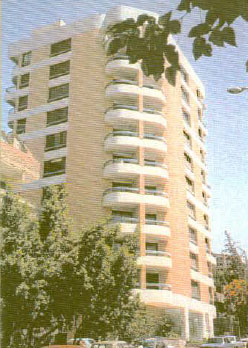 Medina: What in the work of XXA is most expressive of your personality as a designer?
Medina: What in the work of XXA is most expressive of your personality as a designer?
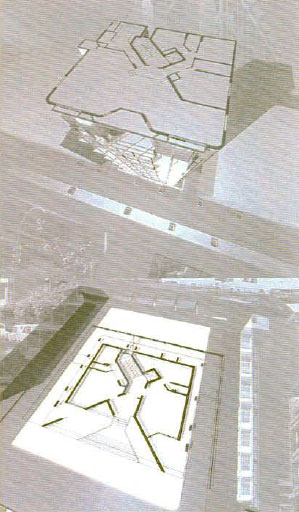
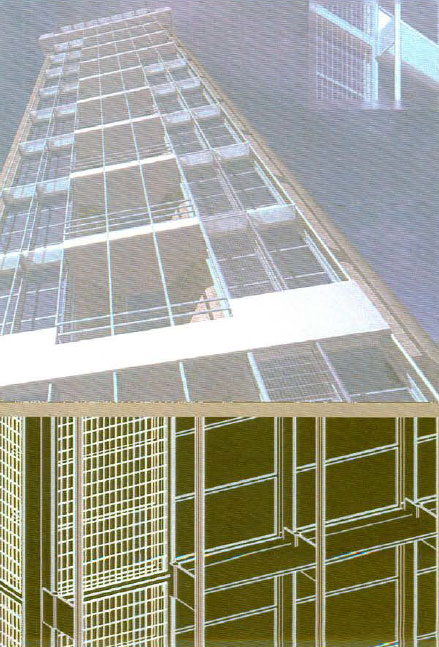 XXA: I believe that architecture is not about deliberate self-expression. Instead, its charge and mission is to attempt to capture the identity and culture of others - not only clients, but what I interpret as our societal clients, all those who will encounter but possibly not use our buildings.And finally, this must be achieved within a framework of environmental responsibility, poetic awareness, and aesthetic sensibility.
XXA: I believe that architecture is not about deliberate self-expression. Instead, its charge and mission is to attempt to capture the identity and culture of others - not only clients, but what I interpret as our societal clients, all those who will encounter but possibly not use our buildings.And finally, this must be achieved within a framework of environmental responsibility, poetic awareness, and aesthetic sensibility.
D.M
